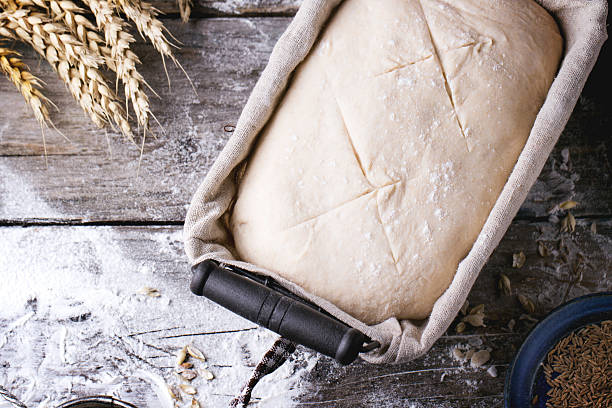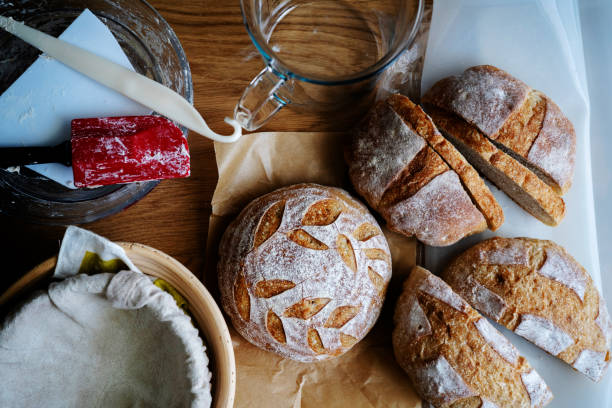In what way should one choose the suitable proofing basket for your needs?
Selecting the appropriate size of proofing baskets will enable you to provide enough room for optimal bread rise. The basket's dimensions should correspond to your normal dough output level. Usually sufficient for smaller loaves is an 8-inch basket; bigger amounts can call for a 10- or 12-inch basket. Moreover, the type of the basket—round or oval—dependent on the loaf style you like also counts. Choosing the suitable size produces a well-risen loaf with smooth form, thereby improving the professional presentation.
Benefits of baking bread with natural rattan baskets
Natural rattan proofing baskets are chosen by both home and professional bakers for their several uses. Great absorbency of Rattan helps it to remove additional moisture from the dough, therefore providing a crisp crust in baking. Its texture also shows a slight pattern on the dough that adds handmade, rustic beauty to the finished bread. Because Rattan is sturdy and environmentally beneficial as well, long-term use of it is sustainable. Apart from their practical function, these baskets enhance the aesthetic attractiveness of bread-making.
Basket care and maintenance for bread proofing
Careful treatment of your bread proofing basket will help you to maintain hygiene and guarantee longevity of it. After every usage, shake out any leftover flour; then, let the basket completely air dry to prevent mould growth. Should dough stick on the surface, gently sweep it off. Water can ruin the natural fibres, hence avoid cleaning the basket in it. Should constant dough residual arise, carefully remove it. Appropriate dry-based storage offers dependability in your baking process by enabling the basket to keep its form and quality over time.

Making artisan bread with bread proofing baskets
Making traditional artisan bread largely depends on proving baskets. By shaping and supporting the dough all through the proving process, these baskets offer the unique rustic look and feel that help to set artisan bread apart. To make the crust crispy, the natural component of the basket absorbs moisture. Furthermore, the way the last loaf looks draws attention to the spiral or linear pattern left on the dough by the basket. Taken together, these components let one produce commercially good bread right at home.
Best Materials for Baskets Designed for Bread Proofing
Mostly, the content determines the bread proofing basket to be used. Rattan is the most typically used material since it is naturally strong and airy. Still rather fashionable and with same benefits are oak and wicker baskets. There are plastic replacements even if their natural look and moisture-wicking properties differ. For those who appreciate their surroundings, rattan and wicker are superior options because of their lifespan. Knowing the advantages of every ingredient enables bakers to select the best one for their specific bread-making requirements.
For both rookie and experienced bakers looking to streamline their approach, bread-making kits are a terrific solution. Usually including all the ingredients, these kits also include all the tools required for home bread making—a proving basket, dough scraper, and a scoring tool. Including all necessary tools lets a kit simplify the starting process. For more experienced bakers, it can offer particular tools or improvements they would not now have. A complete bread-making kit helps you enhance your baking experience and guarantees consistent, great results.
Look a whole bread-making set for what?
The best bread making kit included tools and quality of those items should be taken into account while selecting one. A reasonable kit might call for a bench scraper, dough whisk, bread proving basket, and lame (scoring) instrument. Some packages might feature measuring cups or linen tablecloths among other things. Make sure the materials—including stainless steel and natural rattan—are sturdy and food-safe. All you need to make bread fit for a bakery right at home is a full suite of excellent tools.

The Loave Texture Changing Action of Bread Proofing Baskets
Bread proofing baskets enhance bread texture by helping dough to rise under control. The stiffness the basket provides helps the dough to retain its form following fermentation. Natural fibres in the basket let the dough's surface release moisture, therefore creating a crispier crust when baked. This also generated a chewy but light-textured soft interior crumb. Using a proofing basket is a basic way to improve the general appearance and texture of your homemade bread.
Advice on Using Your Bread Making Tools Most Effectively
Application of every tool correctly will enable you to maximise the capacity of your bread-making machinery. First familiarise yourself with the proving basket if you wish to shape your dough exactly. Use the lame for scoring; this stresses the unique look of the bread and ensures controlled oven expansion. The bench scraper controls sticky dough and keeps your work tidy. Every tool has a specific purpose; knowing them will produce regularly good loaves with a professional finish.
The worth of proper bread dough scoring
An important stage in bread production, dough scoring ensures appropriate loaf expansion during baking. One can avoid naturally developing crust ruptures in the created dough by guiding the steam to depart using a sharp scoring instrument or lame. These cuts also give the loaf its distinctive appearance, therefore improving the appeal and use of the bread. Correct scoring methods and a proofing basket supporting your bread will allow your bread to have a balanced rise and good artisan finish.
How to Use Professional Tools to Improve Your Bread Making
Buying well crafted instruments would greatly increase your ability to make bread. Premium proofing baskets, lames, dough scrapers define the uniformity and accuracy of your loaves. These instruments enable better control of the proofing, shaping, and baking techniques, thereby producing bread that not only tastes better but also looks bakery- worthy. Professional tools will help you to develop your techniques and create artistic quality bread most likely to amaze family and friends.

Conclusion
From novice to expert, your bread will be much better if you use a well-rounded bread-making equipment and a bread proofing basket. Improving your home-baked loaves from attaining the perfect rise to create a beautiful crust calls for these items absolutely necessary. Your own house may look and taste exactly like artisan bread with attentive equipment and material expenditures. Whether your proving basket and bread-making technique is simple white loaf, sourdough, whole wheat, or another proofing basket and bread-making process can help to ensure constantly excellent results.